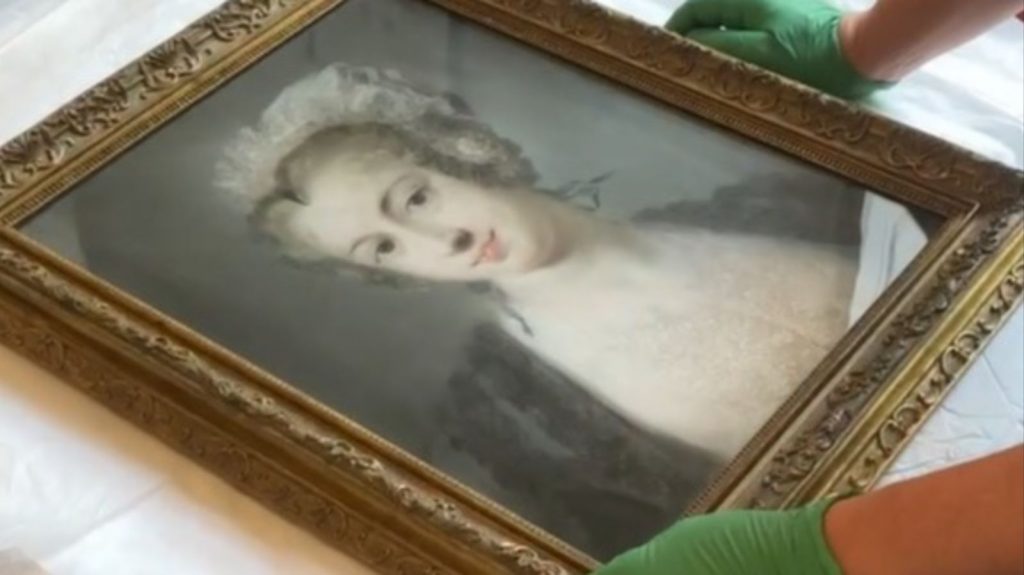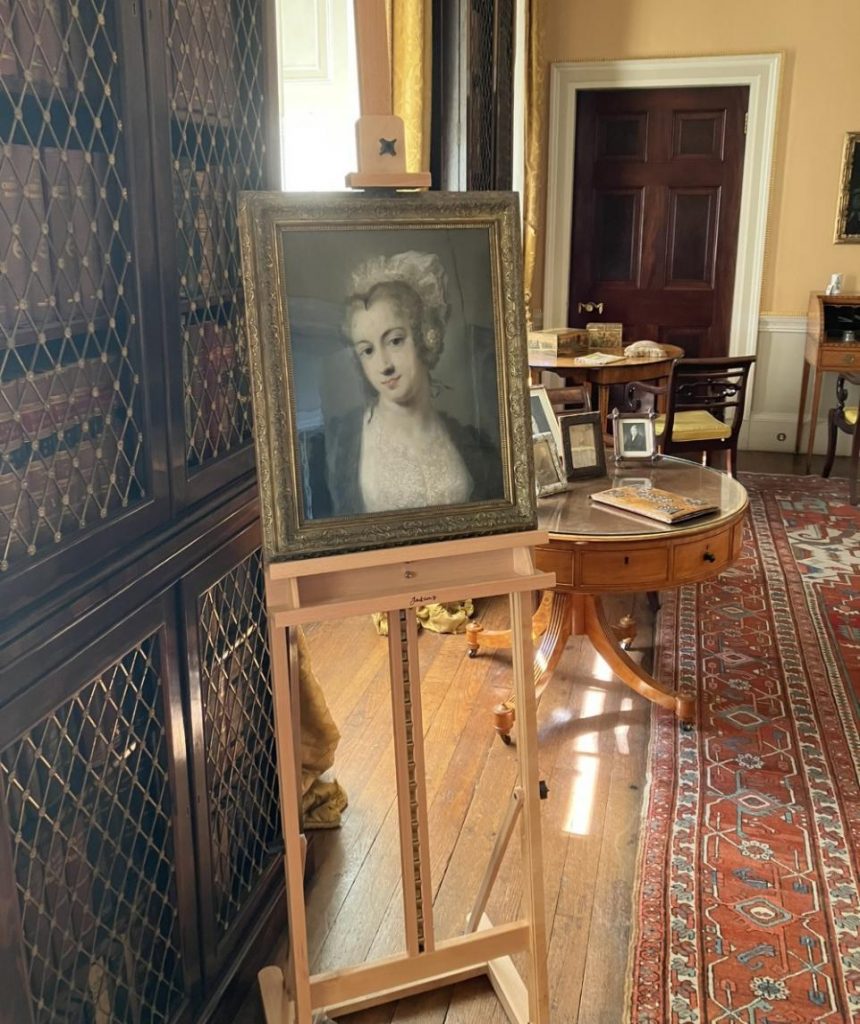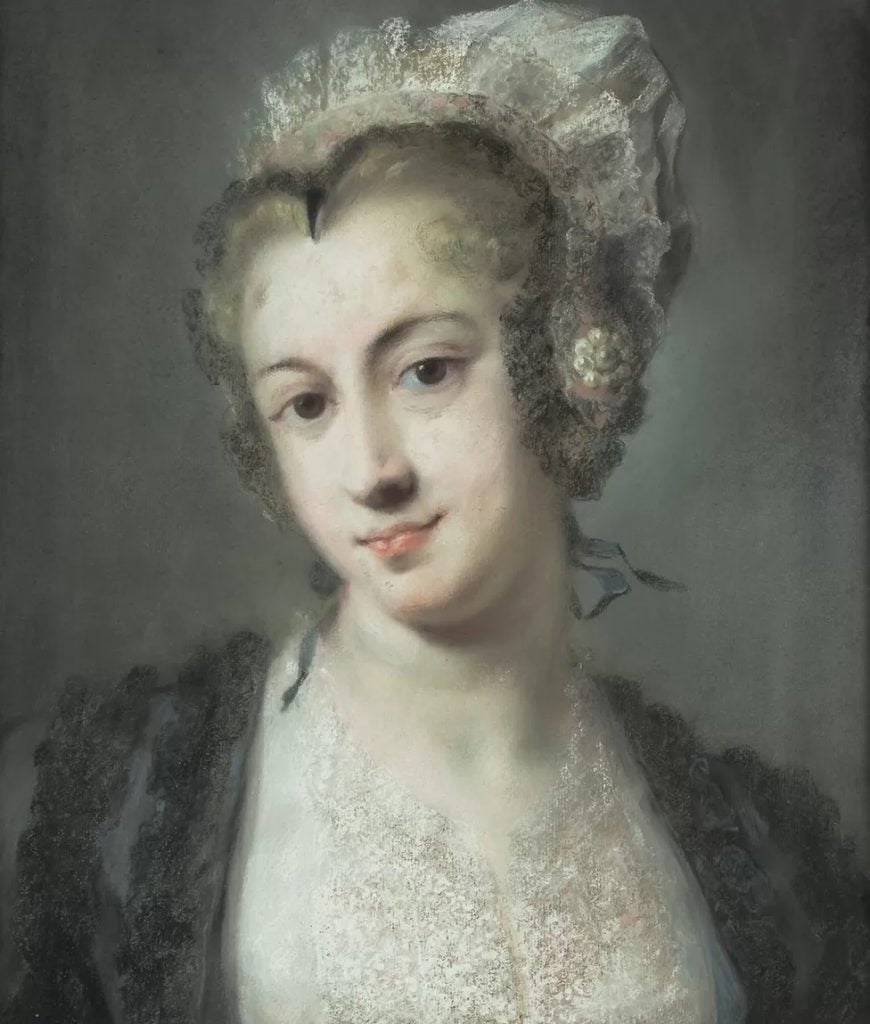For 35 years, a delicate pastel portrait languished in storage at Tatton Park, a historic estate in Knutsford, Cheshire, in the U.K. Then came a call from a curator in New York, asking to take a look. The work, it turned out, was by Rosalba Carriera, the renowned Venetian Rococo painter and pastelist, and one of art history’s most successful women artists.
The rediscovery came courtesy of Xavier Salomon, curator and deputy director at New York’s Frick Collection, who became interested in the Italian artist after the museum received a donation of two of her works in 2020.
“The more I started working on her, I realized there was a need for a new catalogue raisonné and biography,” Salomon said in a phone interview. “It’s going to take many years because she has hundreds of pastels all around the world, and I am just trying to see every single one of them.”
To date, the curator has looked at more than 200 Carriera pastels—but he’s also seen plenty, that while attributed to the artist, were actually copies by other artists. Tatton Park was just one of five homes in the U.K.’s National Trust Salomon had on his itinerary, one of which had a suite of five that turned out to be the work of British artists. But he was hopeful about Tatton Park, which, according to the National Trust’s inventory, had owned The Portrait of a Tyrolese Lady, identified as the work of Carriera, since the 18th century.

Rosalba Carriera, The Portrait of a Tyrolese Lady. Photo courtesy of Tatton Park and the National Trust.
The composition matched one of the artist’s best-known works—which means that it was widely copied and reproduced, with at least 30 known versions in existence, most by lesser artists. (They’ve all been documented in Neil Jeffares’s Dictionary of Pastellists Before 1800.)
“During Rosalba’s travels to France in 1721, we know that she stopped in a small village in Tyrol in the South of Germany and saw a very beautiful woman in an inn. She was so struck by this woman that she decided to portray her,” Salomon said. “Rosalba called her the peasant Venus. And the image became so popular that many people wanted versions of it.”
There at least one known autograph copy at the Gemäldegalerie Alte Meister at the Dresden State Art Museums, as well as one Salomon considers a good candidate at the Victoria & Albert in London.
“When I saw the photos of the Tatton Park one, I always thought this is very good and there is a chance that it is by Rosalba herself,” he said.
Tatton Park’s version was likely purchased by Samuel Hill, who left his estate to his nephew Samuel Egerton, then owner of Tatton Park, in 1758. (Before inheriting the family property in 1738, Egerton actually apprenticed in Venice with art-dealer Joseph Smith, who exported many of Carriera’s works.)
Maurice Egerton, the fourth and last Lord Egerton of Tatton, left the paper drawing to the trust upon his death in 1958, but it hasn’t been on view since a redecoration carried out in 1987.
“The picture has been in our picture store since the mid 1980s and was thought to be a copy of a Carriera work rather than by her,” Carolyn Latham, the estate’s mansion and collections manager, told digital wire service Zenger.
So it was a big moment when Salomon arrived to examining the piece in person. Quickly, he found proof of Carriera’s hand. When conservator Richard Hawkes carefully unframed the picture for Salomon, separating the pieces from its backing, there it was: a Santini prayer card.

A Santini prayer found in Rosalba Carriera’s The Portrait of a Tyrolese Lady helped identify the piece as an original by the artist. Photo courtesy of Tatton Park and the National Trust.
“When Rosalba prepared her work for export, she would hide a Santini prayer… tucked into the back of the frames, for blessings for a safe passage,” estate collections manager Vicky Rowbotham told the BBC. “Over time, these fragile bits of paper often became lost or separated from her works. The discovery of one still in situ at Tatton was a real find.”
Salomon estimated that he’s found a Santini card in roughly one in 10 Carriera works he’s examined.
“Every time we find one of those little pieces of paper, it’s hugely exciting,” he said. “It just means that she was most likely the last person who touched it, who put it there.”
With Carriera’s authorship confirmed, Tatton Park’s next step was to conduct a thorough restoration of the fragile artwork.
Conservators worked to stabilize the surface, lining, frame, and glass before returning the portrait to the estate’s Yellow Drawing Room, where it originally was on display. The curators were loathe to separate the piece from the Santini card after the two managed to stay together for 200 years, but are exhibiting a reproduction of the prayer alongside the work.
Salomon also hopes to conduct further research on the various copies of Tyrolese Lady.

Rosalba Carriera,The Portrait of a Tyrolese Lady, a rediscovered portrait by the renowned pastel artist, on view at Tatton Park. Photo courtesy of Tatton Park and the National Trust.
“Working out which is the very, very first one is difficult if not impossible,” Salomon said. “But while Rosalba described her as kind lowly girl working an in, I’ve done some work with costume historians, and the costume of this woman is actually not a poor costume. She actually must have been a fairly wealthy lady. Maybe she was the owner of the inn—we don’t know. Clearly she’s not an aristocrat or anyone from the Imperial family, but she is clearly someone who’s well off.”
The museum unveiled the reattributed portrait late last month, and will keep it on view through the end of the season, which runs through October 29. It will be back on view come the spring, but conservation concerns may eventually require another stint in storage.
“Pastels are very tricky to display because UV light can damage them. We have to keep them away from the windows,” Latham told ITV News. “We’ll find a dark corner to keep it in.”
More Trending Stories:
An Early Edition of an ‘Unhinged’ Christopher Columbus Letter Outlining What He Discovered in America Could Fetch $1.5 Million at Auction
An Elderly Couple Sold a ‘Worthless’ African Mask for $157. Now They Are Suing the Buyer Who Auctioned It for $4.4 Million
An English Woman Paid $100 for a Sculpture at a Trunk Sale That Turned Out to Be an Elisabeth Frink Work Worth $72,000
Three Artists, Immersed In Far-Flung Residencies, Offer Unique Takes on Human Truths at New York’s International Center of Photography
What I Buy and Why: British Artist Glenn Brown on His Historical Collection and the ‘Ugly Duckling’ He Bought by Accident
A Norwegian Man Stumbled Upon a Trove of Gold Dating to the Early Middle Ages, Including a Rare Pendant Depicting the Norse God Odin
A Top Antiquities Sleuth Has Called Out the Manhattan D.A. For Continually Passing His Work Off As Its Own









